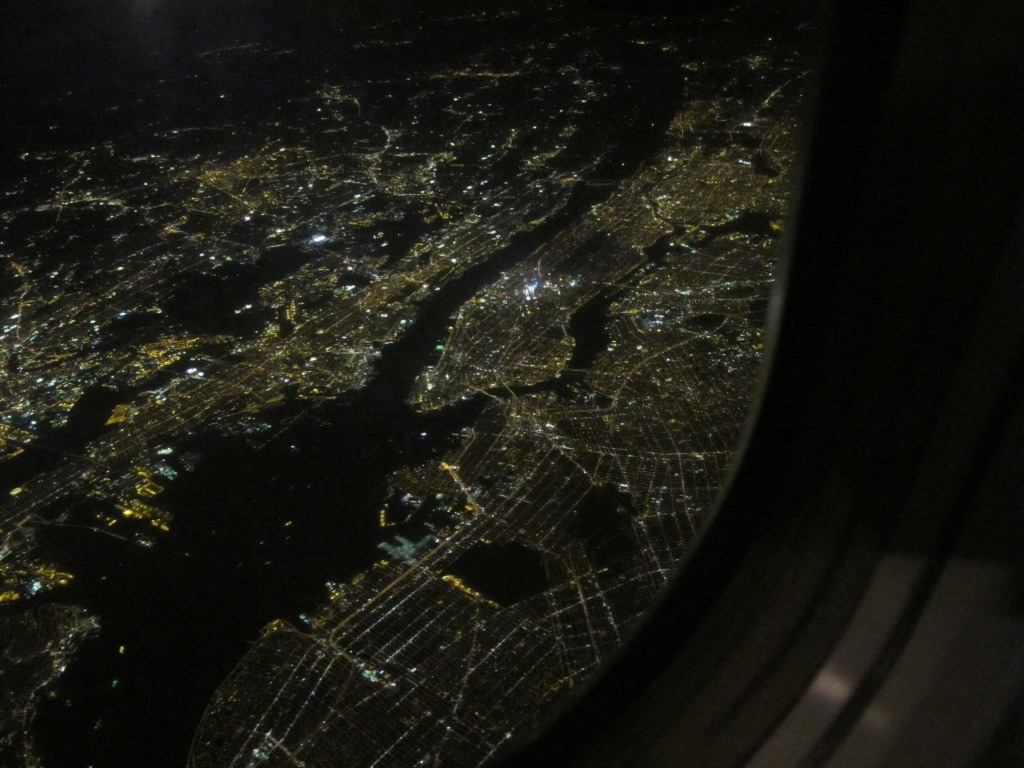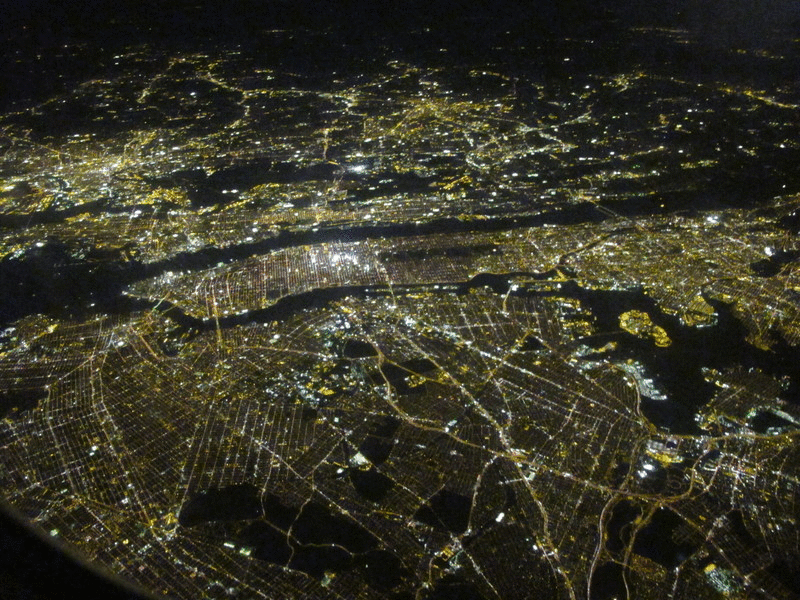Another airplane window photo
November 29th, 2012
I haven’t been able to find my glory photos, but here is a nice shot out the airplane window of another airliner at the same altitude, with it’s contrail.
(click for full size)
You’re looking south on a flight to Boston from some airport in Europe. Taken 3 December 2005 with a Canon A95 compact camera. Cropped and sharpened a little, that’s all.
Here’s a horribly low-resolution video taken about 5 minutes earlier:
Photos from an airplane window
November 14th, 2012
Back in November 2011 I was flying from San Francisco to Boston, and saw this out the airplane window:
That’s Manhattan and greater New York.
I grabbed my camera (a rather ordinary Canon G11) and started snapping. Here are the best (click on any pic for full size):
These are all un-retouched JPEGs, straight of of the camera. Amazing.
I just made a little animated GIF out of a few later pix:
AT&T’s roaming fees and the American Way
August 23rd, 2010
Last week I came back from a brief visit to Croatia (visiting family).
I took along my trusty iPhone, having first jailbroken and unlocked it, so I wouldn’t get whacked with AT&T’s international data roaming fees.
Over the course of 10 days, I used 44 Mbytes of data; I consider that quite moderate – a little Web browsing, minimal email, and some Google Maps. (I’d expected to use about 10x as much.)
I bought a SIM card from one of the local networks, VIP (a Vodafone affiliate, I think).
VIP’s deal was as follows: For HRK 100 (US $17.40 at today’s exchange rate), you get a prepaid SIM card loaded with HRK 100 of credit. Calls come out of that at $0.14 to $0.44/minute, depending on time of day and what network you’re calling (landlines are less). International calls are $0.47 to $1.08/minute, depending on where you’re calling (calling the US is the $1.08/min rate).
Again out of your HRK 100 credit, you can buy data service – 20 MBytes for HRK 15 ($2.61) or 100 MB for HRK 30 ($5.23). (Don’t believe me? Look here. ) I went for the 100 MByte deal, using up HRK 30 of my HRK 100 credit. Since I only used 44 MBytes of that, the rest went to waste. I don’t really know how much credit was left when I came back to the US; but I know I was able use voice and data both in the Munich airport and in the USA using the same card.
So, 10 days’ use of the iPhone, voice and data, cost me $17.40. And I didn’t use it all up. (Service was great, by the way – much better 3G data coverage in rural areas than I get in the USA.)
Just for curiosity, I checked how much AT&T would have charged me for the same thing.
Their standard international data roaming rate is quoted as $0.0195/kByte. That’s just shy of 2 US cents per 1024 bytes, or $20/MByte. I used 44 MBytes so that would have been $879. Yes, nearly nine hundred dollars. For very light usage; I could easily have used many times more if I’d been traveling for business.
But, of course, AT&T says if you’re going to be travelling internationally, you really ought to buy one of their “Data Global” packages – 20 MB for $25/month, 50 MB for $60/month, and $120 for 100 MB. (Recall that I bought 100 MB from VIP for $5.23.) And if you go over your monthly allowance, it’s $10/MB.
What is AT&T thinking?
Google on “iPhone international data roaming” and you’ll find lots of horror stories about multi-thousand-dollar AT&T bills from short trips. I didn’t get whacked, but what does AT&T think is going to happen when someone gets a $3000 bill after two weeks in London, or a $60,000 bill after downloading one episode of “Prison Break”? They might or might not get paid, but for sure they are going to lose a customer – forever. Each and every time they send out a bill like that.
It may be legal, but it is bad business – incredibly bad business.
One of the things that has made the US such a wealthy country is a business culture that includes the idea of a “fair price”. Although it’s generally legal to charge any price the market will bear – even taking advantage of buyer ignorance or desperation – mainstream American culture supports the notion that there is a “fair price” – the price that an informed buyer would pay in a competitive market, considering circumstances of location, quality, convenience, etc.
So, for example, Americans frown upon selling generators for $10,000 during a blackout, if they go for $1000 at normal times. Or the rural tow truck driver who wants $2000, cash, to pull your car out of the muck, just because the next closest tow truck is hours away.
Many economists wouldn’t have a problem with that – in a certain narrow sense, those kinds of price spikes (“gouging”, if you like) may be efficient. But a society in which most sellers feel revulsion toward “taking advantage” is one in which buyers are more willing to engage in transactions. If buyers feel they’re unlikely to get screwed because of their ignorance (as in the the case of AT&T here) or desperate circumstances, then there is more commerce and less effort expended in investigation of deals and precaution against getting caught by local monopolists. In short, transaction costs are lower for everyone.
I’m not advocating legislation here. But the American attitude has it merits. And AT&T is not making itself any friends or building any customer loyalty.





